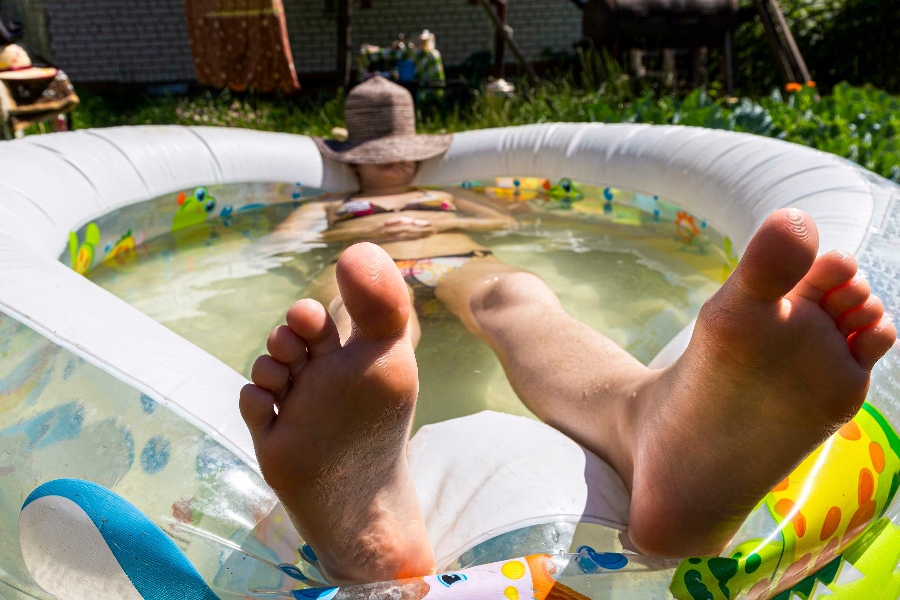Anita Perkins* was calling it her “emancipation vacation.” She and her husband had recently split and “I wanted to do something to celebrate myself!” she says. So she booked a group tour to Mexico and was having a terrific time—until one misstep while exploring the ruins of El Tajín landed her in the hospital with a fractured kneecap.
Still have questions about travel insurance? NextTribe is hosting a seminar with insurance experts so you can get the answers you need. Tues. Jan. 28th. RSVP here.
“I had pain and swelling—not to mention embarrassment,” Perkins recalls. “It was a simple fracture, thank goodness. I did however need a splint and wouldn’t be able to do any activities for the rest of the trip.”
Fortunately, Perkins had travel insurance, which reimbursed her for transportation back to the States, her Mexican medical bills, and the price of the unused portion of the tour. “I had to get all the proper paperwork together and jump through some hoops,” she says. “It took a few months but eventually the insurance company made good on my claim.” So should you get this kind of coverage? Read on, and learn tips for travel insurance.
The Purchase You Hope You’ll Never Use
Like all “just in case” policies, travel insurance is one of those things we buy hoping we won’t ever use. Though it’s actually been in existence since the late 1800s, travel insurance has become increasingly popular in the 21st century. The 9/11 attacks are considered part of the reason for the spike. Many of the most adventurous among us were looking for peace of mind in an unsure world. A recent Business Insider survey on the subject found that 38 percent of respondents said they obtain travel insurance.
Market analysis foresees further growth, due to an emphasis on personalized and flexible coverage options that reflect the needs of today’s travelers. Although policies can be tailored to suit, the general types of travel insurance are:
- Cancellation insurance. This reimburses you for a trip if you cannot go due to an unforeseen covered reason (such as snowstorm that prevents your departure).
- Interruption insurance. This reimburses you for unused prepaid costs if you must return home mid-holiday for an unforeseen covered reason. (An example: Your spouse becoming seriously ill while you’re away,)
- CFAR insurance, which stands for a self-explanatory cancel-for-any-reason policy.
- Medical travel insurance. This pays medical costs if you get sick or injured while away. It may or may not cover you for return transportation home or to a treatment facility.
- Add-ons are available for theft of valuables, such as jewelry or electronic equipment. Check your existing homeowner’s or renter’s insurance, which may already cover that. This also covers you for loss or damage to luggage (note: airlines typically cover that).
In 2024, leisure-traveling seniors made up the largest group of travel insurance consumers, according to Grand View Research. Makes sense, since the older we get, the more likely we are to encounter a health-related emergency on vacation. To offset costs, some medical travel insurance policies may cover the gamut. They may cover emergency evacuation (which gets you to a facility that offers appropriate treatment), ambulance services, medical tests and services, hospital stays, accidental death coverage, and repatriation of remains.
The Price of Peace of Mind
Folks can buy travel insurance prior to each vacation. But for those who travel frequently, here’s a tip for travel insurance: Look into annual policies that can be adjusted depending on the type of individual trips.
So how much does it cost? Travel insurance isn’t a one-price-fits-all purchase. Budget for between 4 and 10 percent of the cost of a vacation. The price of a policy is usually determined by:
- Trip cost and duration—longer, more expensive vacations have pricier premiums.
- Medical costs in your destination—if care is costly in that country, you’ll pay more for a policy.
- Breadth of coverage—the more covered events and extra options, the more you’ll shell out.
- Age of the traveler—older folks typically pay more.
Sure, it sounds a bit confusing, but once you get used to the lingo, you’ll figure it out. “The details of different policies and the types of available coverage are clearly laid out,” says Kelly Wells. She’s a truly intrepid traveler who always gets insured—even though she’s never had to make a claim. “You enter your information and dates for the trip to get an estimate of the cost.”
Purchase coverage once you’ve booked your flight and tour package or accommodations.
Wells, who visited Africa, India, Bali, and Thailand in 2024, usually purchases emergency medical insurance only for most trips, but for extensive, exotic sojourns may pony up for more coverage. And timing, she points out, is important. To get a fair estimate, you’ll want to purchase coverage once you’ve booked your flight and tour package (or accommodations and excursions). “But don’t wait too long,” Wells warns. “Some insurers require you to purchase your policy within 15 days of the first payment you make towards a trip.”
Read more: Our Top Travel Influencers to Follow
Tips for Buying Insurance and Making a Claim
If you’ve never purchased travel insurance before, you might find yourself in the market for it when planning your next vacation. The reason? More and more tour companies now require it, like NextTribe.
Read a lot of reviews and ask friends for references to find a good insurance company.
“Do your research,” says Teresa Burns Gunther, who changed insurance companies after making a claim several years ago and didn’t get one red cent back. “I asked around and read a lot of reviews, then chose the company that rated highest.”
You can also speak to your travel advisor or a representative of your tour company, although they might not be the most objective. CNBC Select recently reviewed a variety of companies and policies (find their picks for the best here, as well as a review of best travel insurance companies for seniors here).
Another of our tips for travel insurance: Be sure to read the fine print to understand specifics of what is and isn’t covered. If you have questions, ask before you buy. Part of the issue Burns Gunther experienced was that she’d booked her hotel through her credit card, which used a discount site that didn’t give refunds.
Bear in mind that benefits typically apply to unexpected occurrences. So if you break your leg while skiing a triple black diamond slope, you may be out of luck! Also, some companies may not provide coverage for COVID, which was categorized as a global pandemic and therefore may be considered a “foreseen event.”
Travel Insurance Priority: Paperwork!
If you do become sick or injured while away, your health must be your top priority, but it’s essential to obtain legitimate documentation for every aspect of your care if you want reimbursement. “I made sure that the doctor who treated me wrote a report, explaining why I had to leave the tour,” says Burns Gunther, who came down with an intestinal infection while in Portugal last year. “I also got receipts from the doctor and for my prescription. What’s more, I took the doctor’s business card so I could reach out to her for more info if the insurance company wanted it.”
Creating a paper trail of cancellations is also key. If you must scrap accommodations, transportation, or excursions, do so by email or text so there’s a record you can submit to your insurer.
Creating a paper trail of cancellations is key to helping you access coverage.
Travel insurance may not be a must, but nowadays it’s definitely a “thing” that makes common sense, at any age, and whether you’re going alone, with a pal or romantic partner, or with a group. “I recommend getting at least emergency medical insurance for peace of mind,” Wells says. “Even if you’re in great health, accidents happen. Better to have it and not need it.”
* Name and some details have been changed
























0 Comments